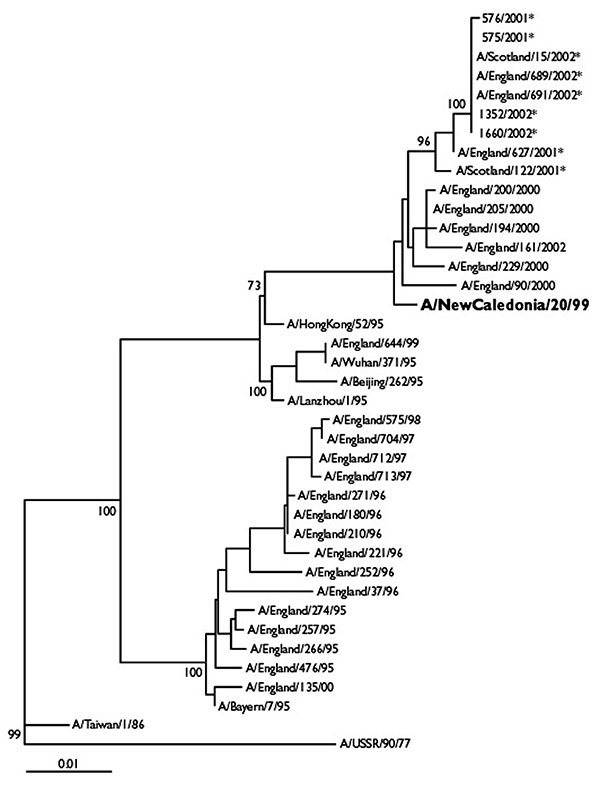Volume 9, Number 3—March 2003
Research
Influenza AH1N2 Viruses, United Kingdom, 2001–02 Influenza Season
Figure 3

Figure 3. Phylogenetic tree of influenza A H1N1 and H1N2 virus HA1 nucleotide sequences. The tree was generated by using joining-joining analysis. The lengths of the horizontal lines are proportional to the number of nucleotide substitutions per site. Trees were bootstrapped x100. H1N2 viruses are indicated with an asterisk. The current H1N1 vaccine strain is in bold typeface.
Page created: December 07, 2010
Page updated: December 07, 2010
Page reviewed: December 07, 2010
The conclusions, findings, and opinions expressed by authors contributing to this journal do not necessarily reflect the official position of the U.S. Department of Health and Human Services, the Public Health Service, the Centers for Disease Control and Prevention, or the authors' affiliated institutions. Use of trade names is for identification only and does not imply endorsement by any of the groups named above.